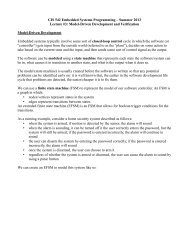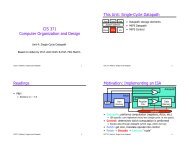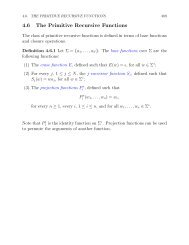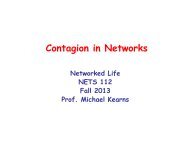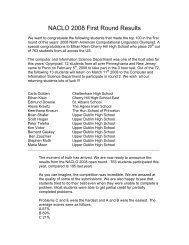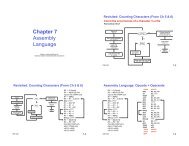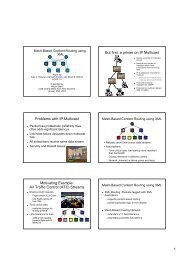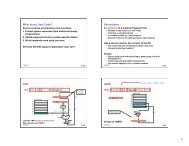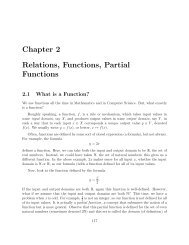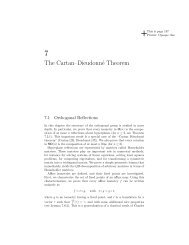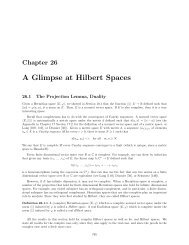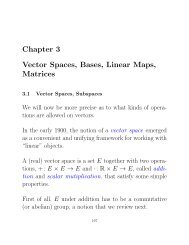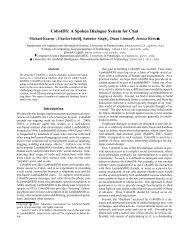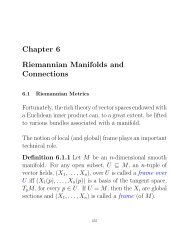Chapter 3 Context-Free Grammars, Context-Free Languages, Parse ...
Chapter 3 Context-Free Grammars, Context-Free Languages, Parse ...
Chapter 3 Context-Free Grammars, Context-Free Languages, Parse ...
Create successful ePaper yourself
Turn your PDF publications into a flip-book with our unique Google optimized e-Paper software.
58 CHAPTER 3. CONTEXT-FREE GRAMMARS AND LANGUAGES<br />
Using the algorithm for eliminating ɛ-rules and chain rules, we can first convert the<br />
original grammar to a grammar with no chain rules and no ɛ-rules except possibly S → ɛ,<br />
in which case, S does not appear on the right-hand side of rules. Thus, for the purpose<br />
of converting to weak Greibach Normal Form, we can assume that we are dealing with<br />
grammars without chain rules and without ɛ-rules. Let us also assume that we computed<br />
the set T (G) of nonterminals that actually derive some terminal string, and that useless<br />
productions involving symbols not in T (G) have been deleted.<br />
Let us explain the idea of the conversion using the following grammar:<br />
A → AaB + BB + b.<br />
B → Bd + BAa + aA + c.<br />
The first step is to group the right-hand sides α into two categories: those whose leftmost<br />
symbol is a terminal (α ∈ ΣV ∗ ) and those whose leftmost symbol is a nonterminal (α ∈<br />
NV ∗ ). It is also convenient to adopt a matrix notation, and we can write the above grammar<br />
as<br />
<br />
aB ∅<br />
(A, B) =(A, B)<br />
+(b, {aA, c})<br />
B {d, Aa}<br />
Thus, we are dealing with matrices (and row vectors) whose entries are finite subsets of<br />
V ∗ . For notational simplicity, braces around singleton sets are omitted. The finite subsets of<br />
V ∗ form a semiring, where addition is union, and multiplication is concatenation. Addition<br />
and multiplication of matrices are as usual, except that the semiring operations are used. We<br />
will also consider matrices whose entries are languages over Σ. Again, the languages over Σ<br />
form a semiring, where addition is union, and multiplication is concatenation. The identity<br />
element for addition is ∅, and the identity element for multiplication is {ɛ}. As above,<br />
addition and multiplication of matrices are as usual, except that the semiring operations are<br />
used. For example, given any languages Ai,j and Bi,j over Σ, where i, j ∈{1, 2}, we have<br />
<br />
A1,1 A1,2 B1,1 B1,2<br />
A2,1 A2,2<br />
B2,1 B2,2<br />
Letting X =(A, B), K =(b, {aA, c}), and<br />
<br />
A1,1B1,1 ∪ A1,2B2,1 A1,1B1,2 ∪ A1,2B2,2<br />
=<br />
A2,1B1,1 ∪ A2,2B2,1 A2,1B1,2 ∪ A2,2B2,2<br />
H =<br />
<br />
aB ∅<br />
<br />
B {d, Aa}<br />
the above grammar can be concisely written as<br />
X = XH + K.



